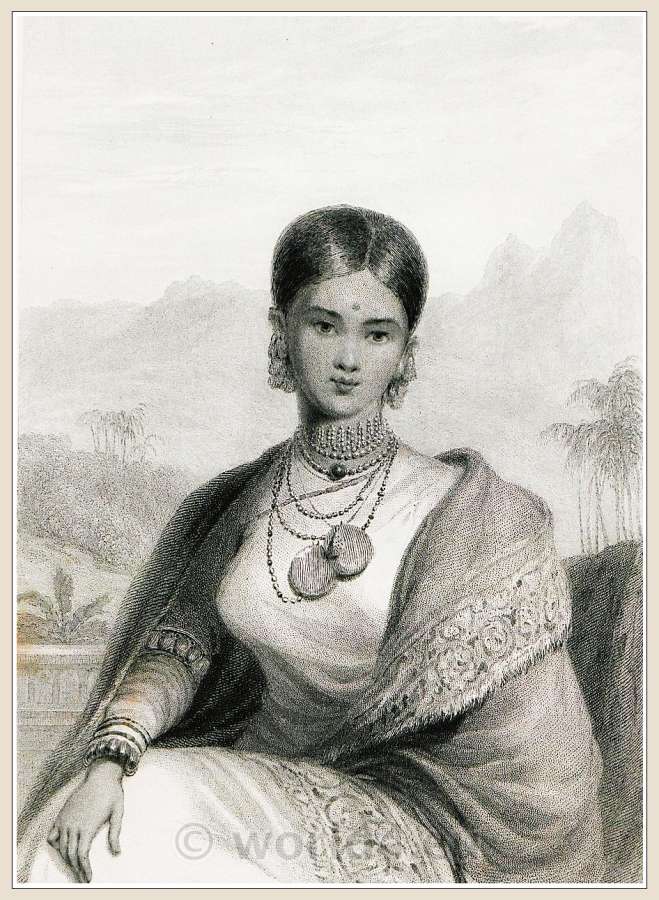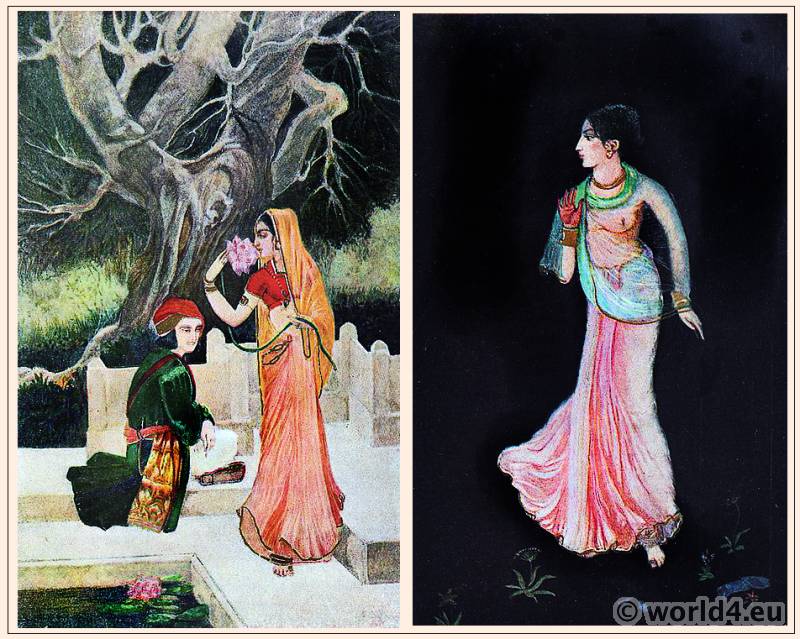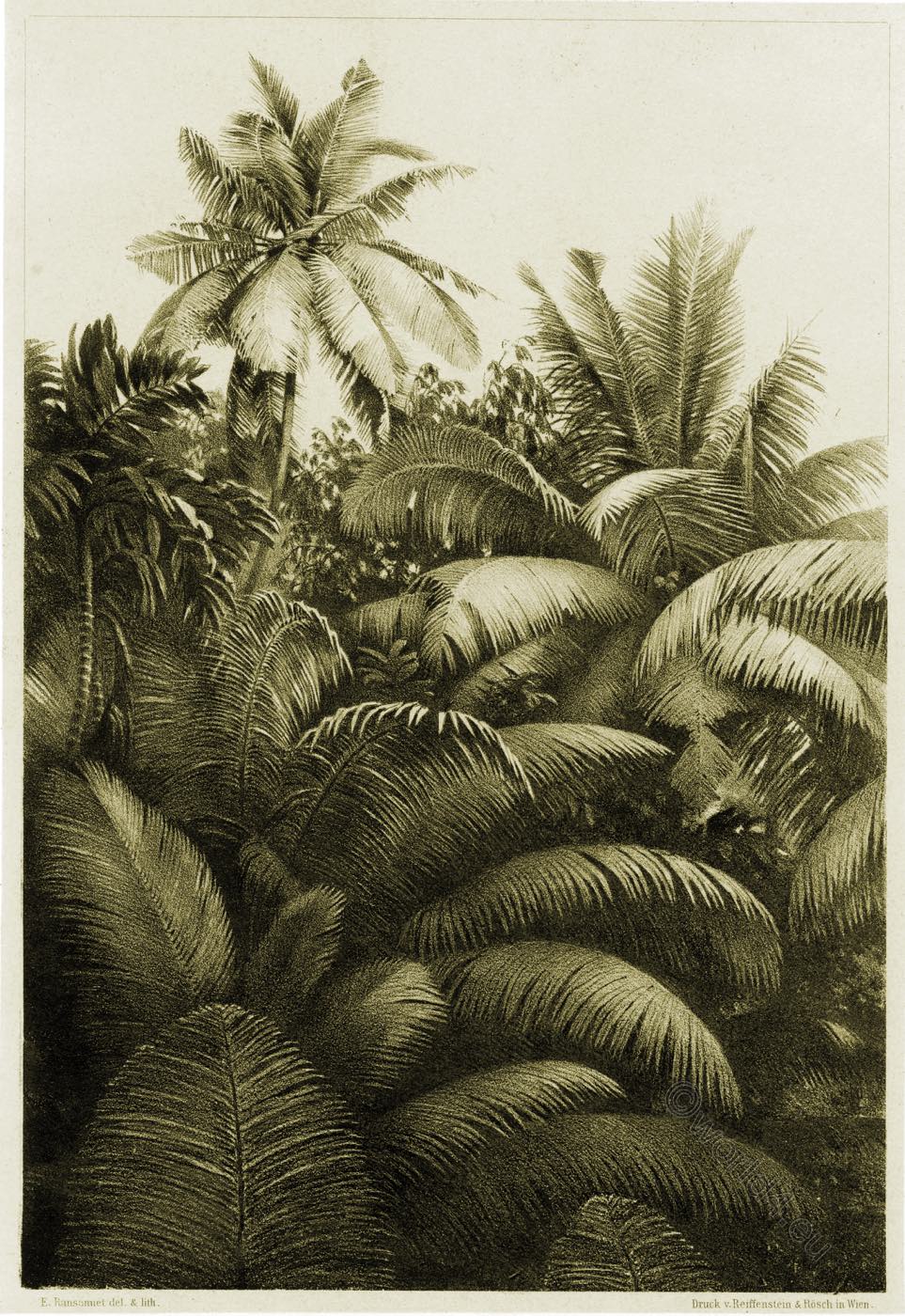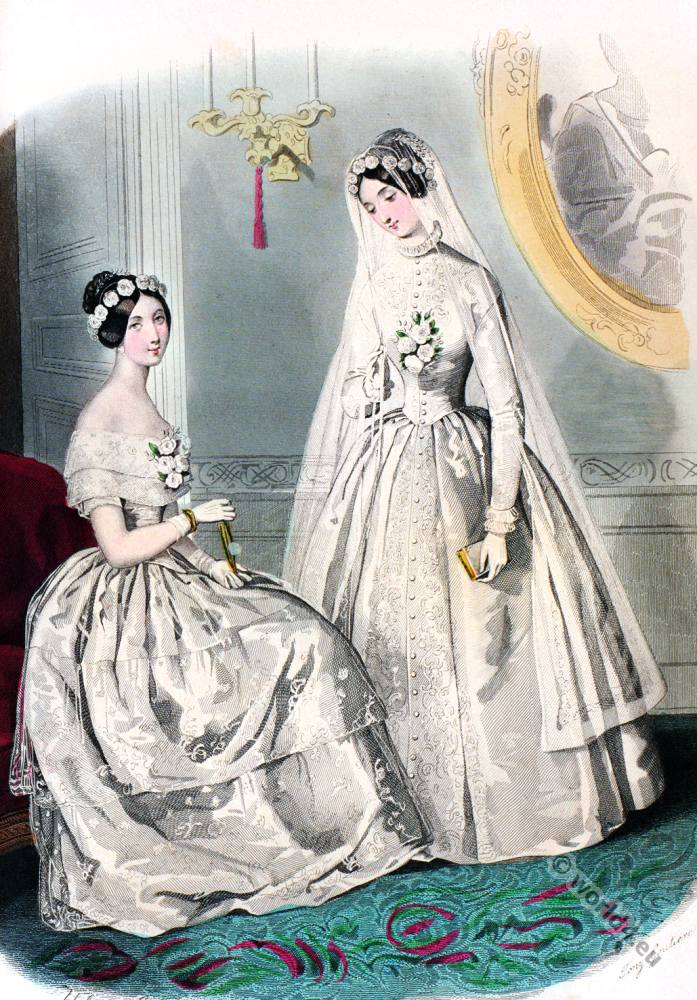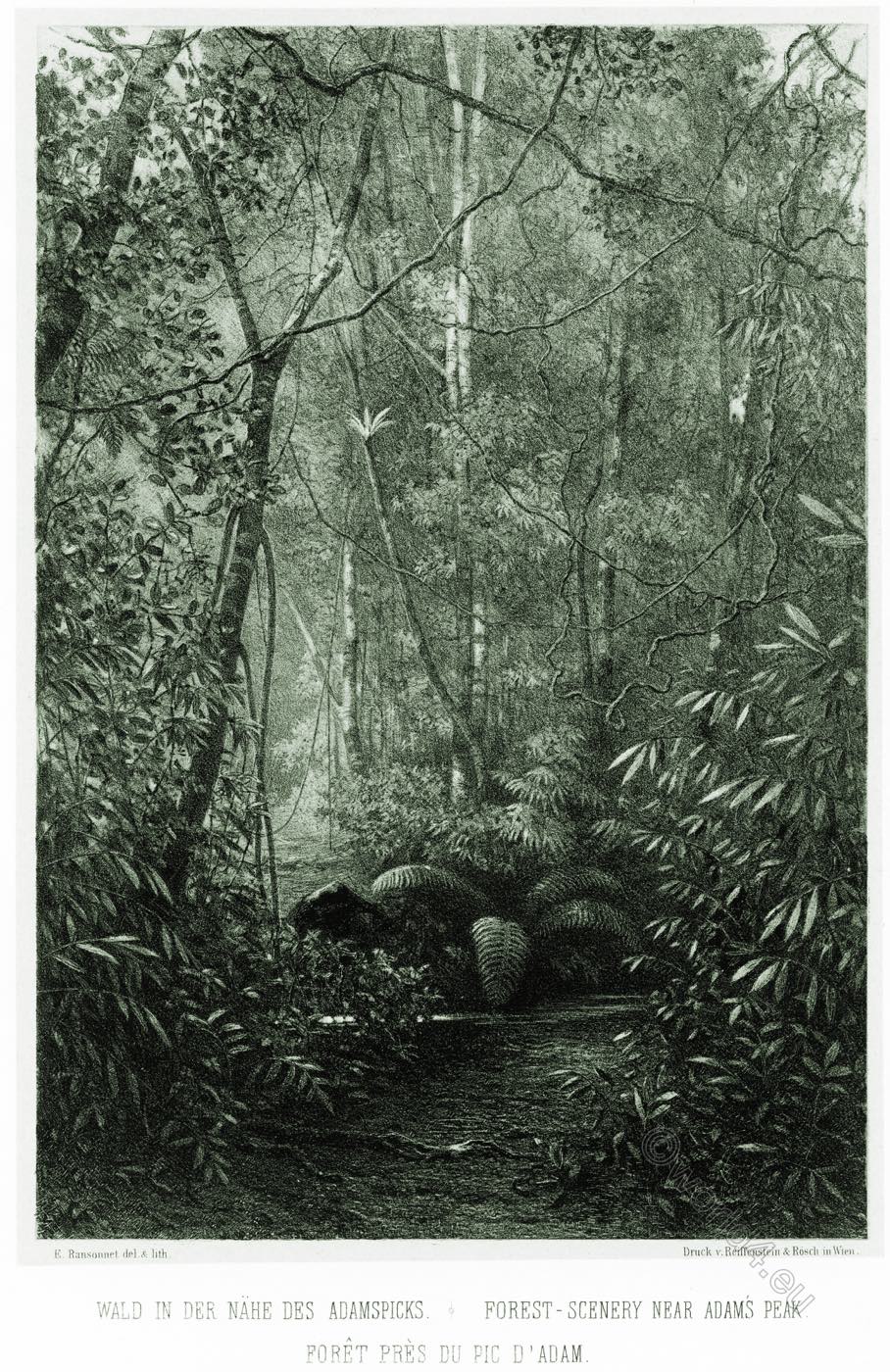Plate X.

Tank near Colombo. Étang près de Colombo.
The coast – currents occasioned by the monsoon, deposit the sand and mud, conveyed to the sea by the rivers, along the flat coasts of Ceylon. Between the land and the extensive sandbanks, which are being gradually formed, open channels or lakes are left, the salt water of which is gradually, in the course of time, replaced by fresh water.
Plate X. exhibits a tank near Colombo, which evidently owes its existence to a similar formation. Nothing can surpass the graceful groups of palms, reflected on the mirror-like surface of the water, which is no longer disturbed by the restless waves of the sea. The large leaves of the Nelumbium *) float on these quiet waters, and sometimes stretch over them to such an extent, as not to leave the least part of the water uncovered.
Source: Sketches of the inhabitants, animal life and vegetation in the lowlands and high mountains of Ceylon. As well as of the submarine scenery near the coast taken from a diving bell by the Baron Eugène de Ransonnet. Printed for the author by Gerold & sold by Robert Hardwicke, London 1867.
*) The Indian lotus flower (Nelumbo nucifera).
Related
Discover more from World4 Costume Culture History
Subscribe to get the latest posts sent to your email.

